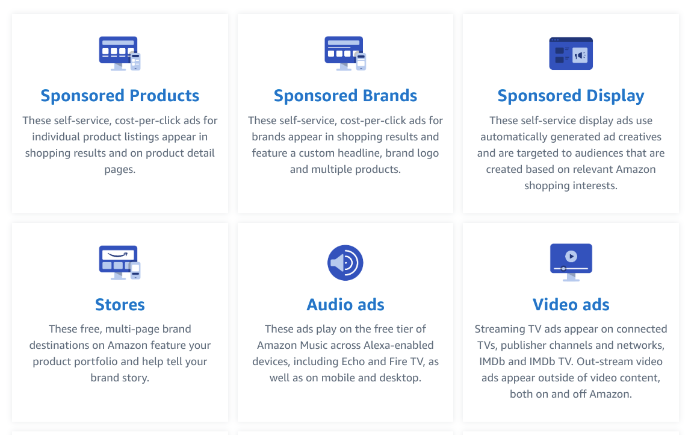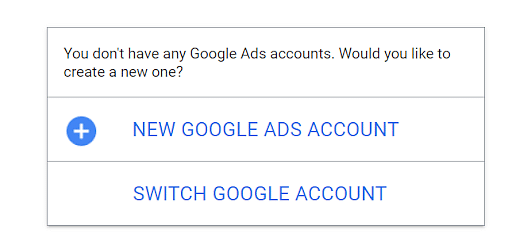
A good advertisement is not about its technical aspects. It should be credible and attractive. It should feel sentimental, trustworthy, and repeated. An advertisement's sentimental value is determined by the personal associations it has with its audience. It should be concise and yet powerful in its message. Five characteristics make a good advertisement. Keep reading to learn more. We have just discussed the first three. These are the remaining five.
Attractive and believable
Advertisements with attractive inodels increase their effectiveness. There are many studies supporting the use of HAMs in marketing literature. Advertisements with appealing inodels are more likely to be rated favorably and have higher sales. These benefits are not always directly attributable to HAMs. Caballero Lumpkin, Madden, and Madden all note that attractive inodels can be misleading in the contexts of product effectiveness or ad effectiveness.
Despite the paradoxical nature of this statement, it is not hard to see how celebrities are important in advertising. A study found that advertisements with celebrities were more attractive than those without them. However, the correlation was not significant when advertisements featured a real-life celebrity. Celebrities were more likely to be believed. Advertisers can create strong connections between the products they market and their celebrity spokespersons.

Sentimental value
Advertising attempts to appeal emotionally to as many customers possible. However, it is not the case that all advertisements are equal. Higher emotional value advertisements are more likely to be seen by educated customers. Advertisements that target educated individuals are more effective than ads targeting those who don't have a degree. These are some useful tips for making your advertisement more impactful. Let's take a closer look at each of them.
Ads that can trigger emotions include pride, friendship, achievement, and man's empathy. The "+” sign signifies that the value is greater or less than the average. In general, ads with positive sentiments work best. Advertisements that evoke feelings of love and friendship do best. Advertisements which evoke fear, shame and loneliness do not work well. However, advertisements that trigger feelings of pride and loneliness are also effective.
Repetition
Repetition is an important aspect of a good advertisement. Repetition refers to the repetition of a message until the target audience understands it. It can be achieved by simple slogans or suggestions. The repetition of a message makes a lasting impression. It is possible to use repetition to create movement and meaning. For an advertisement, repetition is essential to evoke an emotion.
Multiple studies have looked at the effects of repetition. Ray and Sawyer (1981), performed a meta-analysis and found that after 10 exposures, the brand has reached maximum attitudes and that recall increases linearly. The findings have implications for professionals who study frequency advertising. It supports the belief of repetitionists that repetition increases attitude and recall. It is not an effective strategy to use repetition in every advertisement.

Trustworthiness
The word 'trust' is derived from the verb 'trustworthy,' which means "reliable, honest, and loyal." Trustworthiness is a combination of being kind, compassionate, resourceful and courageous. It creates trust and draws attention. It is crucial for people to feel good regarding the company or product that they are dealing with. This principle also applies to advertising. Trustworthy people work hard to excel in their chosen professions and help others feel great about themselves.
Business must show transparency and authenticity by responding to customer feedback, and then sharing it publicly. Customers trust a business that owns up to mistakes and failures. Customers can trust businesses that are open to sharing information about its products or processes. Trust can be gained quickly if a company listens to customers and rectifies any problems. Ultimately, this increases its credibility.
FAQ
What is the cost of advertising on social media?
Social media advertising is expensive if you choose to take this route. You'll be charged monthly according to how long you spend on each platform.
Facebook - $0.10 for 1,000 impressions
Twitter - $0.20 for 1,000 impressions (if tweeting)
If you send invitations, Linkedin: $0.30 per 1,000 impressions
Instagram: $0.50 per 1,000 impressions
Snapchat - $0.60 per 1,000 impressions ($0.40 per user)
YouTube - $0.25 Per 1,000 Views
Tumblr Text Posts - $0.15 Per 1,000 Impressions
Pinterest - $0.05 per 1,000 impressions per month
Google + $0.15-$0.20 Per 1 Million Impressions
Tumblr – $0.15 - $0.20 per 100,000 impressions
Vimeo - $0.20- $0.25 per 10,000 impressions
Soundcloud - $0.20 - $0.0.25 for 1,000,000 plays
StumbleUpon - $0.20 -$0.25 per 1 billion pageviews
Digg - $0.20- $0.25 for 1000 diggs
Reddit – $0.20-$0.25 Per 1000 Comments
Wordpress – $0.20--$0.25 Per 500 Comments
Flickr - $0.20 -- $0.25 per 5,000 photo uploads
What is an advertisement buyer?
An advertiser buys advertising space on TV, radio, print media, etc.
Advertisers pay only for the time their message is to appear.
They don't necessarily look for the best advertisement, but instead seek out the most effective way to reach their target market.
An advertiser might have details about potential customers, including their age, gender and income.
This information can be used by advertisers to decide which media works best for them. Direct mail might be more effective with older customers, for example.
Advertisers also look at the competition. Advertisers may choose to place ads near competitors if there are similar businesses in the area.
Advertisers should also consider the budget they have and how long they plan to spend it before it expires.
What is affiliate marketing?
Affiliate marketing is an internet business model in which you refer customers to other products and services. You get paid by the product owner when someone buys from them.
Affiliate marketing is based on referrals. Referring people to your website is all that's required. All you need to do is refer them to the website.
Making money doesn't require any hard selling. It's equally easy to sell and buy.
An affiliate account can be created in minutes.
The more people you refer, the more commission you will receive.
There are two types.
-
Affiliates who are the owners of their own websites
-
Affiliates who work in companies that offer products or services.
What is radio advertising?
It is important that you understand the differences between media. It is important to understand that all media forms are complementary and not competitive.
Radio is best used as an extension of television advertising. It can reinforce key messages and provide additional information.
For radio listeners, TV commercials can often be too long. Radio ads are generally shorter and less expensive.
How can I select my target audience?
Start with yourself, and the people closest to you. If you don’t know where or how to start, ask yourself "Whom are I trying to reach?"
Ask yourself these questions. Who are the most influential people within my industry? What problems do they deal with daily? Which people are the most intelligent in my industry? You can find them online.
Rewind to the beginning, when your business was founded. What was your motivation for starting? What was your problem and how did it solve?
These questions will enable you to identify your ideal client. These answers will help you understand your ideal clients and what motivates them to buy from you.
It is also possible to look at the websites and social networks pages of your competitors to get insight into who they cater.
Once you identify your target customers, then you must decide which channels to use to reach these people. You might, for example, create a website to target home buyers if you offer services to real-estate agents.
You could create a blog if you offer software to small business owners.
If you sell clothing, you can create a Facebook fan page for teens. A Twitter account could be set up by restaurant owners to allow parents to search for places that are kid-friendly.
The important thing is that you have many options for getting your message across.
What is branding?
Your brand is your way of communicating who you are as well as what you stand behind. It is how people remember your name.
Branding is about creating a memorable brand identity for your company. A brand does not only include a logo, but includes everything that you look like and how your voice is used by employees.
Because customers know exactly what they are getting, strong brands help them feel confident in purchasing from you. And it gives them confidence in choosing your products over those of competitors.
Apple is a good example of a company that has a strong brand. Apple's brand is recognized worldwide for its clean design, high product quality, and great customer support.
Apple's brand is synonymous with technology. Apple is the brand people think of whenever they see a smartphone or computer.
It is a good idea to create a brand prior to starting a new company. This will give your business a face and personality.
Advertising what is it?
Advertising is an art. Advertising is not about selling products. It's about making emotional connections between people, brands, and each other.
Advertising is about communicating ideas through images and stories.
It is important to communicate clearly and persuasively. You must tell a story that is relatable to your target market.
Advertising is therefore different from other forms such as presentations, writing, and public speaking.
You are building a brand identity when you run a successful advertising campaign.
And this is how you become memorable. People want to remember you.
Statistics
- Advertising's projected distribution for 2017 was 40.4% on TV, 33.3% on digital, 9% on newspapers, 6.9% on magazines, 5.8% outdoor, and 4.3% on radio. (en.wikipedia.org)
- Nonetheless, advertising spending as a share of GDP was slightly lower – about 2.4 percent. (en.wikipedia.org)
- Advertising spending as a share of GDP was about 2.9 percent. (en.wikipedia.org)
- Worldwide spending on advertising in 2015 amounted to an estimated US$529.43 billion. (en.wikipedia.org)
External Links
How To
How do you place an advertisement on a billboard
Although billboards have been around since late 1800s, they first became popular in World War II as they were placed along highways and roadsides. Text advertising is the most common form of billboards, but some include artwork or photographs. While most billboards are static, others display messages that change regularly, such as weather forecasts, sports scores, stock prices, and political events.
While most billboards are outdoors displays, indoor versions are available. Most outdoor billboards are seen by traffic at least once per day. Indoor ones are only visible once or twice a year. A "cubic" outdoor billboard is the most popular type. It is made up of three layers: two sheets of glass sandwiched between a layer of fiberglass mesh and one sheet of glass. This allows air to circulate throughout the billboard, which keeps it cool in hot and warm in cold.
Advertisers pay companies like Billboard Advertising Inc., which owns and operates many of North America's largest billboard advertising firms, to put their ads up on their billboards. These companies then sell advertising space on their billboards. Advertisers buy these spaces based on how much they want to spend on advertising. These advertisers often choose the best location for their ads depending on how many people they are likely to see.
Billboard Advertising Inc. sells advertising space. It also has agreements with local governments to place signs on public property. Some cities allow billboards anywhere; others restrict them to certain areas. Chicago, for instance, has a restriction that billboards cannot be more than 1,000 feet from any highway. Other cities require that billboards be placed no closer than 500 feet from a school or church.
Billboard Advertising Inc. has agreements to promote products and/or services throughout the United States.